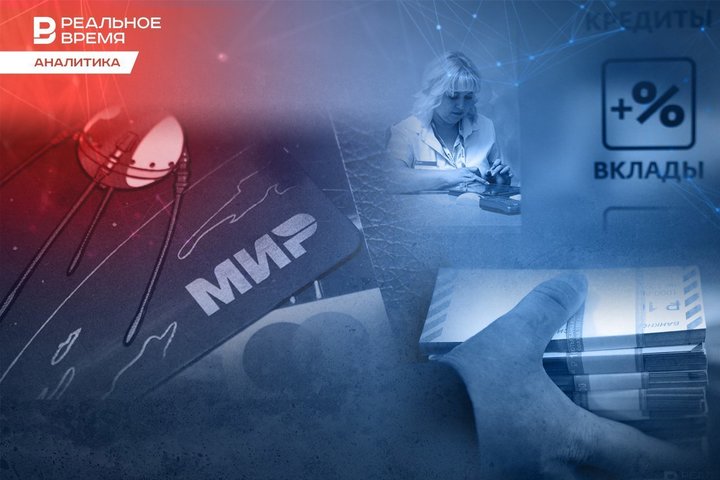Cards, money, overdraft: Russians accumulate 3.6 trillion rubles worth of credit cards
Consumer credit market overview: almost 7 million credit cards have overdue payments for more than three months

The Russian population is heavily dependent on credits — almost 93 million credit cards have been issued in the country, and banks continue to supply borrowers with more and more new “doses” — more than 6 million units in the first quarter of 2024 alone. Why a credit card is the most common bank loan product today and how the market is changing for unsecured consumer loans in the new economic conditions — in the review of Realnoe Vremya analytical service.
Rates are rising, but the population continues to take credit cards
Despite the high rates, consumer lending is still growing above forecasts. To a large extent, this growth is provided by credit cards, the rates on which have always been quite high and therefore turned out to be less sensitive to changes in market rates, the Bank of Russia notes.
According to the Central Bank of Russia, one in three Russians among the economically active population, or 27.6 million people, has a credit card today. For comparison, the number of mortgage borrowers in Russia reached 10.6 million people on January 1, and Russians with car loans — 1.8 million people.
As it follows from the data of the Scoring Bureau credit history bureau (at Realnoe Vremya's disposal), the issuance of credit cards in the first quarter of 2024 showed a monthly positive trend: in March, more than 2 million 198 thousand credit cards were issued to Russians for a total amount of 215.3 billion rubles, in February — 2 million 117 thousand cards for 204.4 billion rubles, in January — 1 million 996 thousand credit cards worth 186 billion rubles.

In total, more than 6.3 million loans worth more than 605 billion rubles were issued in the first quarter of 2024. The average credit card receipt increased to 97,902 rubles (in March 2023 — 90,682 rubles).
The number of issued cards increased by 6% compared to the first quarter of last year, and the amount of funds issued — by 15%. For 3 months of last year, for comparison, more than 5.9 million credit cards worth more than 526 billion rubles were issued.
The total portfolio of credit cards reached 3.6 trillion rubles, and the portfolio of credit cards overdue by more than 90 days amounted to 425 billion rubles. Russians have almost 93 million cards in their hands, and 6.7 million are overdue today, exceeding 90 days, it follows from the data of the Credit bureau.
According to the National Bureau of Credit Histories (NBKI), in April 2024, the issuance of credit cards in Russia slowed by 1.5% compared to the previous month, but the volume of limits, nevertheless, increased to 239.7 billion rubles.
In April 2024, the largest number of new credit cards in the regions of the Russian Federation, according to the NBKI, were issued in Moscow (154.9 thousand), Moscow Oblast (120.8 thousand), Krasnodar Krai (87.0 thousand), St. Petersburg (81.1 thousand), and Rostov Oblast (78.1 thousand). Tatarstan is currently the 8th in Russia: in April, 63.8 thousand cards were issued in the republic — this is by 4.1% less than in March.
“Compared to the previous month, the number of new issued cards decreased slightly in April," said Alexey Volkov, NBKI's marketing director. “In many ways, this is a consequence of the regulator's tight monetary policy to cool the credit market. At the same time, due to the increased incomes of citizens, their credit and consumer activity is still at a fairly high level, ensuring the stable development of the unsecured lending market.”

There is no boom in the debit card market either, Osadchy notes. In 2023, the number of debit cards increased by 13%, while in 2022 — by 18.7%. “A slowdown is also observed in this segment," the analyst states.
“The bank can cheat a little more with a card”
Yan Art, a financial expert, member of the Russian Union of Industrialists and Entrepreneurs Commission on Banks and Banking, PhD in Economics, believes that the popularity of credit cards is influenced by two fundamental points — lending through cards carries less costs for the bank than any other forms, because any one-time loan implies an underwriting procedure (even if you are an old and well-known borrower) and the execution of the loan decision, and the overdraft is automatic. “The borrower has been underwritten once, and no more decisions are needed. This form of lending is more convenient for the bank, especially now, when the process of reducing the physical presence and branches is underway," the expert explains.
The second point affecting the widespread distribution of cards is due to that the bank can cheat a little more with them. “For us, the interest that we pay on a classic loan, taken in cash or to an account, is much more obvious than by cards. We don't go into all the little details. Therefore, by and large, any consumer has a real card payment more than he subconsciously imagines," says Yan Art. “And I also, by the way, have always had such a story while I was using it.”
Besides, today the Central Bank is now “freezing” lending as much as possible, does not encourage the creditworthiness of the population, and banks have more loopholes on cards. “And I don't mean illegal schemes, but just legal loopholes," the expert stressed.

Debt burden of the population is growing
“In recent years, the growth of people's disposable incomes has not kept up with inflation — not official, but, so to speak, “real”, that is, the one that citizens feel when they see changes in prices for services and goods in stores," agrees Igor Dodonov, an analyst at Finam. “At the same time, the rapid spread of credit cards, in my opinion, is largely due to the great convenience of this type of unsecured consumer lending for people. So, in the case of a credit card, it is not necessary to choose all the funds at once — you can use only the amount that is needed at the moment, and pay only interest on it. Besides, credit cards offer various cashbacks as part of loyalty programmes, which ordinary consumer loans lack. Well, an equally important factor is the availability of a grace period during which borrowed funds can be used for free. Moreover, the grace periods have significantly lengthened recently and can reach six months.”

Today, the regulator is pursuing a policy to increase macroprudential limits, which forces banks to limit the issuance of credit cards to customers with a high debt burden. In the future, this will lead to a slowdown in the volume of credit card issuance.